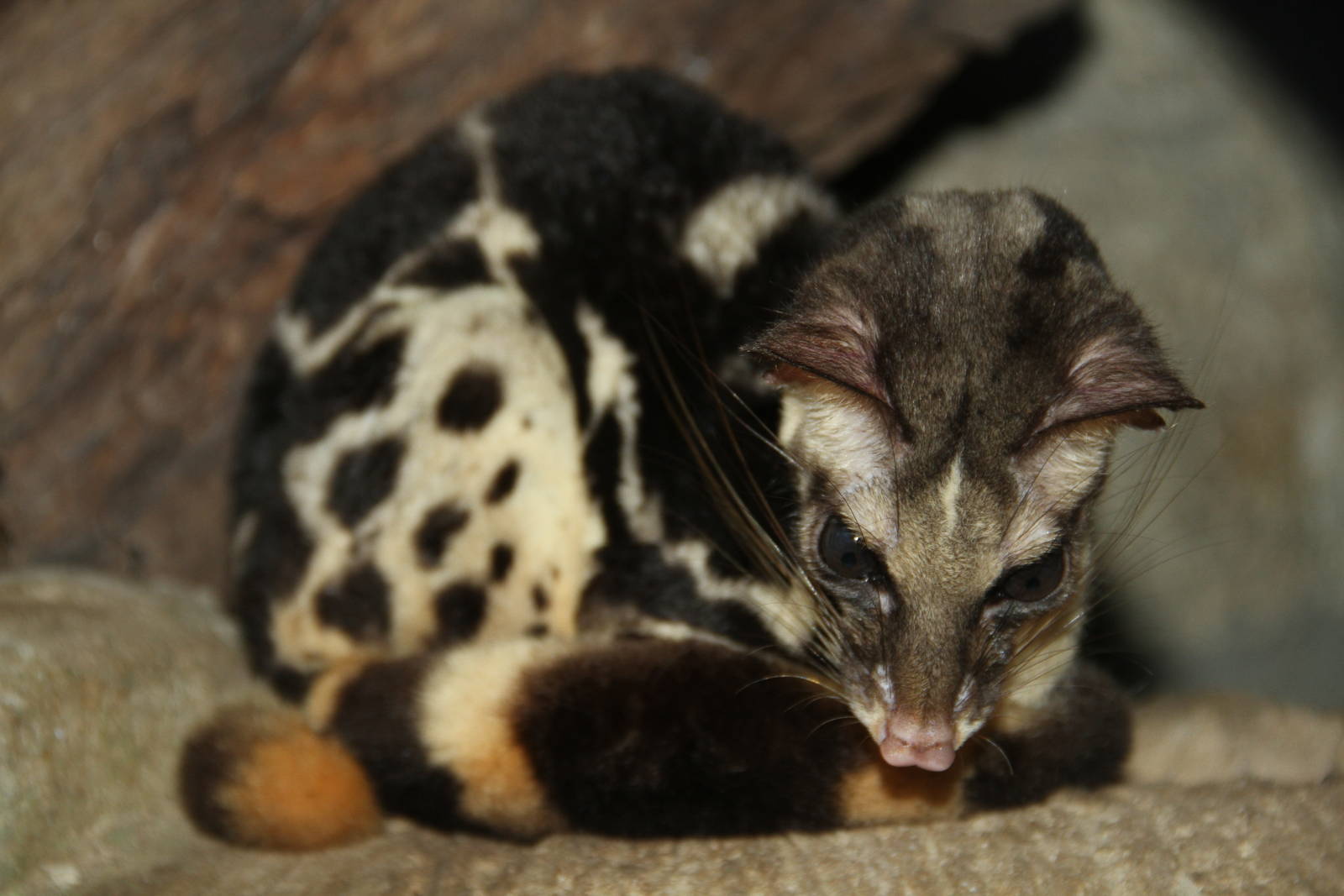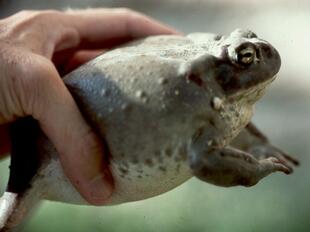
Banded linsang(Prionodon linsang)
Phylum —chordata
Class — mammalia
Order — carnivora
Family — prionodontidae
Genus—prionodon
Appearance
The body of the Banded linsang is 40 cm long, and the tail is about 34 cm. Banded linsangs are very pale yellow with five large transverse dark bands on their backs. They have broad stripes on their necks with small elongate spots and stripes on their flanks. The tail has seven or eight dark bands and ends in a dark tip. Banded linsangs have retractile claws which are very sharp, and have specialized razor-sharp teeth for shearing their food. The soles of their feet have hair between the pads and their toes.
Habitat
The Banded linsang has been recorded in southern Myanmar, Thailand, Peninsular Malaysia, and the Sunda Islands of Borneo, Sumatra, Java, Bangka and Belitung Islands.
Behavior
Banded linsangs are secretive and elusive creatures. They are solitary. The female offspring stays with the mother until maturity, but the male offspring leave soon after weaning. Linsangs are semiarboreal and well-adapted for such a lifestyle. Their bodies are long and slender with short legs, suited for running through the trees and jumping between branches. Their long tails aid in balancing. When hunting, their slender bodies move snake-like along the path of the prey, very well camouflaged by their coats.
Diet
Banded linsangs are omnivorous. A main part of their diet consists of small vertebrates such as squirrels, rats, birds and lizards.
Reproduction
Very little is known about the Banded linsang's reproduction. It is thought that litters of 2–3 are born semiannually in a nest in burrows or hollow trees.
In captivity
Their lifespan in captivity is about 10 years.
Despite the quarrelsome nature, these predators are easily trained, finding a common language with their owners. Keeping these animals at home causes a number of difficulties. The animal is freedom-loving, it needs space — even in a country house it feels uncomfortable. It is best to keep it in an aviary with a large number of trees and shrubs.
They eat, as in their natural habitat, small mammals, lizards or frogs.
Contact games with a strong animal are fraught with injuries, so it is better to use toys instead of hands for communication.
 Russian
Russian
 English
English
























